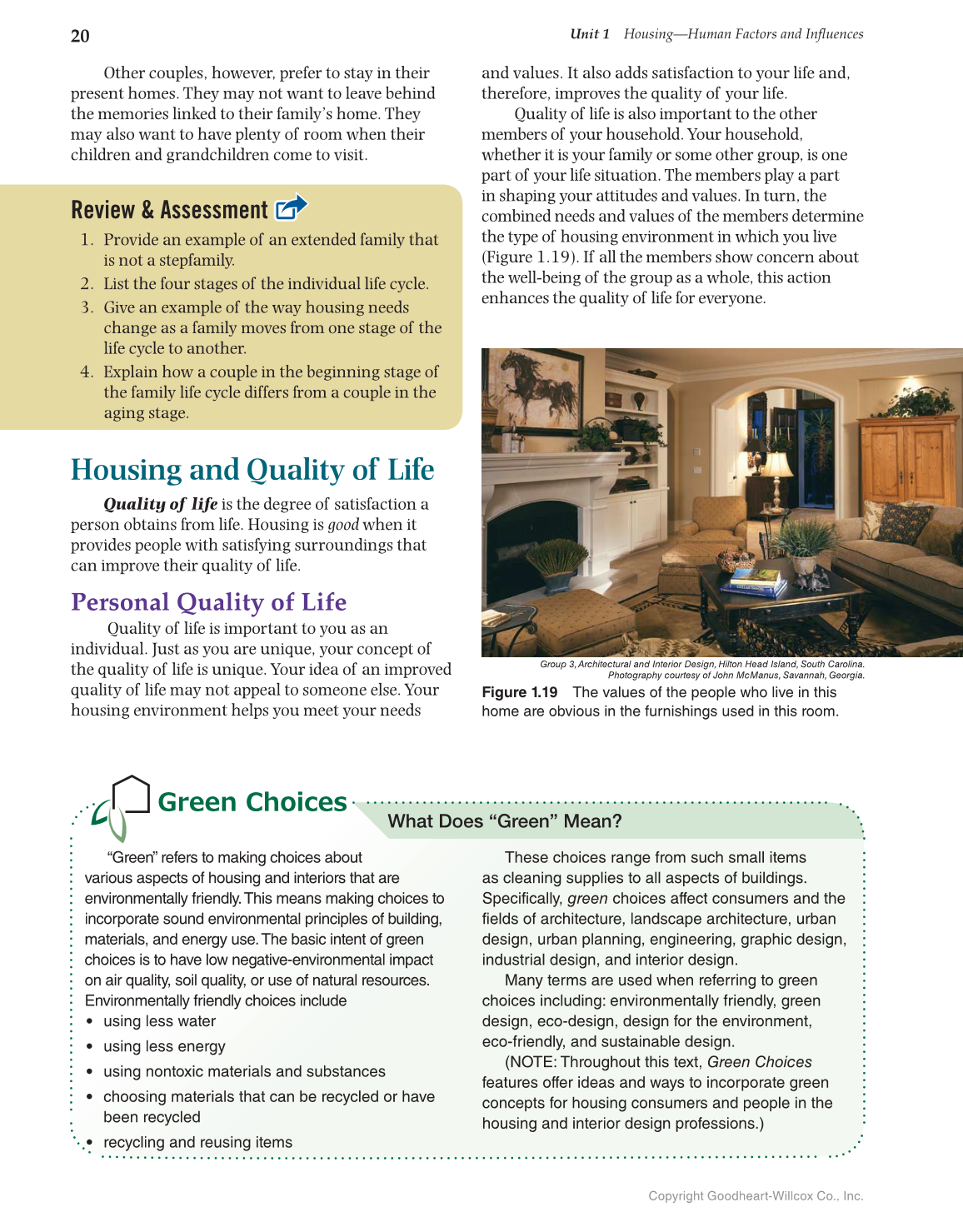Unit 1 Housing—Human Factors and Infl uences
20
Copyright Goodheart-Willcox Co., Inc.
Other couples, however, prefer to stay in their
present homes. They may not want to leave behind
the memories linked to their family’s home. They
may also want to have plenty of room when their
children and grandchildren come to visit.
Review & Assessment
1. Provide an example of an extended family that
is not a stepfamily.
2. List the four stages of the individual life cycle.
3. Give an example of the way housing needs
change as a family moves from one stage of the
life cycle to another.
4. Explain how a couple in the beginning stage of
the family life cycle differs from a couple in the
aging stage.
Housing and Quality of Life
Quality of life is the degree of satisfaction a
person obtains from life. Housing is good when it
provides people with satisfying surroundings that
can improve their quality of life.
Personal Quality of Life
Quality of life is important to you as an
individual. Just as you are unique, your concept of
the quality of life is unique. Your idea of an improved
quality of life may not appeal to someone else. Your
housing environment helps you meet your needs
and values. It also adds satisfaction to your life and,
therefore, improves the quality of your life.
Quality of life is also important to the other
members of your household. Your household,
whether it is your family or some other group, is one
part of your life situation. The members play a part
in shaping your attitudes and values. In turn, the
combined needs and values of the members determine
the type of housing environment in which you live
(Figure 1.19). If all the members show concern about
the well-being of the group as a whole, this action
enhances the quality of life for everyone.
Group 3, Architectural and Interior Design, Hilton Head Island, South Carolina.
Photography courtesy of John McManus, Savannah, Georgia.
Figure 1.19 The values of the people who live in this
home are obvious in the furnishings used in this room.
*UHHQ
What Does “Green” Mean?
“Green” refers to making choices about
various aspects of housing and interiors that are
environmentally friendly. This means making choices to
incorporate sound environmental principles of building,
materials, and energy use. The basic intent of green
choices is to have low negative-environmental impact
on air quality, soil quality, or use of natural resources.
Environmentally friendly choices include
• using less water
• using less energy
• using nontoxic materials and substances
• choosing materials that can be recycled or have
been recycled
• recycling and reusing items
These choices range from such small items
as cleaning supplies to all aspects of buildings.
Specifically, green choices affect consumers and the
fields of architecture, landscape architecture, urban
design, urban planning, engineering, graphic design,
industrial design, and interior design.
Many terms are used when referring to green
choices including: environmentally friendly, green
design, eco-design, design for the environment,
eco-friendly, and sustainable design.
(NOTE: Throughout this text, Green Choices
features offer ideas and ways to incorporate green
concepts for housing consumers and people in the
housing and interior design professions.)
